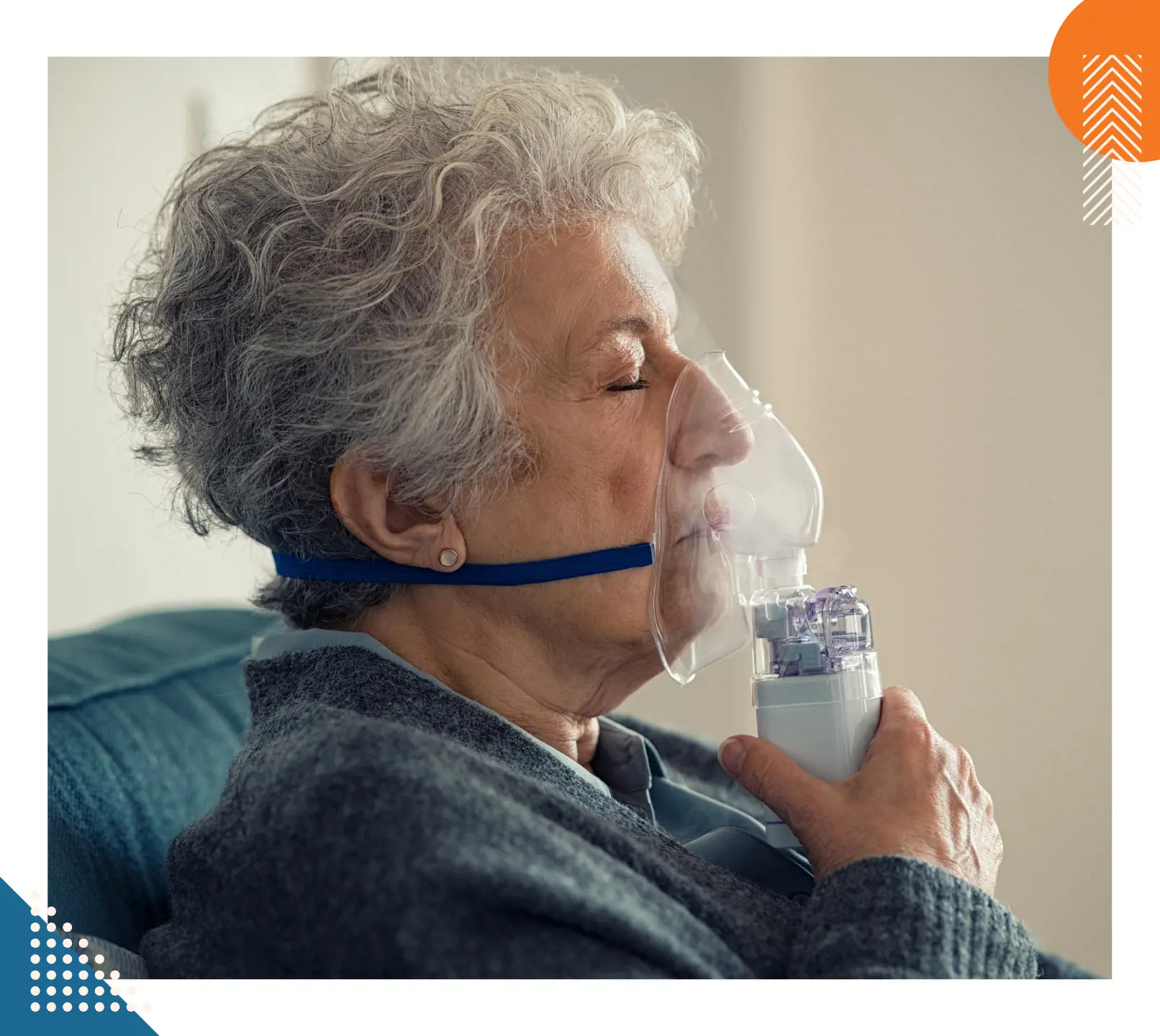Occupational Asthma: Recognising, Treating, and Preventing Work-Related Asthma
This is a type of asthma triggered or worsened by exposure to substances in the workplace. It can affect anyone, from healthcare and cleaning staff to factory and construction workers. Recognising symptoms early and identifying triggers are key to effective management.
In this article, we’ll explore:
-
How to recognise the signs of occupational asthma
-
Diagnosis and treatment options available to help manage symptoms
-
Prevention strategies to reduce exposure and protect lung health at work
Understanding occupational asthma can help both employees and employers create a safer work environment and support early intervention, improving overall health and productivity.
What Exactly Is Occupational Asthma?
This is a form of asthma directly caused by exposure to certain substances in the workplace, such as dust, fumes, chemicals, or animal proteins. These substances, known as sensitisers or irritants, can trigger inflammation in the airways, making it difficult to breathe.
It’s important to note that occupational asthma is different from work-aggravated asthma. While occupational asthma develops due to workplace exposure, work-aggravated asthma refers to pre-existing asthma that worsens because of work conditions such as cold air, dust, or stress.
What Are the Symptoms of Occupational Asthma?
The symptoms of occupational asthma are similar to general asthma but often follow a work-related pattern. Common symptoms include:
-
Wheezing or whistling sound when breathing
-
Persistent coughing
-
Shortness of breath
-
Chest tightness or discomfort
These symptoms may:
-
Appear during working hours or after exposure to certain substances
-
Be worse at night or early morning after a work shift
-
Improve during weekends or holidays when away from work
Other symptoms can include:
-
Runny or stuffy nose
-
Itchy, watery eyes
-
Sore throat or sneezing
The severity and timing of symptoms depend on the type of substance, length of exposure, and individual sensitivity. Sometimes, you can develop occupational asthma right away after breathing in the substances. It may also take a long time before symptoms present.
Does occupational asthma cause asthma attacks?
Yes, occupational asthma can cause asthma attacks if not properly managed. During an attack, the airways tighten due to bronchospasm (narrowing of muscles around the airways), inflammation, and increased mucus production. This combination makes breathing difficult and may require urgent medical attention. Recognising triggers early and following an asthma management plan can help prevent severe attacks.
What Causes Occupational Asthma?
Occupational asthma begins when the lungs become irritated by substances inhaled at work. This irritation triggers the body’s immune system, leading to inflammation in the airways. Over time, repeated exposure makes the airways more sensitive and reactive.
Triggers may include:
-
Chemicals such as isocyanates or cleaning agents
-
Dust from wood, flour, or latex
-
Animal dander or enzymes in laboratory settings
In some cases, the condition develops due to an allergic reaction to a specific workplace substance. Early identification of these triggers is crucial for effective prevention and treatment.
Which Substances in the Workplace Are Harmful?
Many workplace substances can trigger or cause occupational asthma. These include allergens (that cause immune reactions) and irritants (that inflame the airways). The table below shows common examples and the types of jobs where exposure is most likely to occu.
|
Irritant or Allergen |
Common Examples |
Occupations/Environment at risk |
|
Isocyanates |
Found in spray paints, foams, and adhesives |
Spray painters, panel beaters, furniture makers |
|
Flour and Grain Dust |
Wheat, rye, barley, enzymes in baking |
Bakers, millers, food production workers |
|
Wood Dust |
Cedar, oak, pine, varnish chemicals |
Carpenters, joiners, sawmill workers |
|
Animal Proteins |
Dander, hair, saliva, urine, droppings |
Veterinarians, animal handlers, lab technicians |
|
Cleaning Chemicals |
Bleach, ammonia, disinfectants, glutaraldehyde |
Cleaners, hospital staff, janitors |
|
Latex |
Gloves, medical supplies |
Healthcare workers, dental staff |
|
Metal Fumes and Salts |
Chromium, nickel, soldering fumes |
Welders, metalworkers, electronics manufacturers |
|
Fungal Spores and Moulds |
Damp storage, compost, grains, hay |
Farmers, gardeners, grain handlers |
|
Solvents and Adhesives |
Paint thinners, resins, glues |
Factory workers, painters, chemical plant operators |
|
Hair and Beauty Chemicals |
Hair dyes, sprays, formaldehyde products |
Hairdressers, beauty therapists, salon staff |
Repeated exposure to these substances can irritate or inflame the lungs, leading to symptoms that worsen over time if not addressed.
What Jobs Carry a High Risk for Occupational Asthma?
Some workplaces naturally involve more exposure to asthma-causing substances. Jobs at higher risk include:
-
Bakers and food production workers – frequent contact with flour dust and enzymes.
-
Spray painters and automotive workers – exposure to isocyanates and solvent vapours.
-
Cleaners and janitors – regular use of strong cleaning chemicals.
-
Healthcare and dental staff – exposure to latex and disinfectants.
-
Woodworkers and carpenters – inhalation of wood dust and treatment chemicals.
-
Farmers and agricultural workers – exposure to moulds, grain dust, and animal allergens.
-
Metalworkers and welders – fumes from metals and flux materials.
-
Hairdressers and beauty professionals – exposure to hair dyes, sprays, and chemical treatments.
How Is Occupational Asthma Diagnosed?
Diagnosing occupational asthma involves a careful assessment of your symptoms, work history, and medical background. Doctors start by taking a detailed patient history, asking about:
-
The nature of your work and substances you’re exposed to.
-
Whether symptoms improve on days off or during holidays.
-
Any known triggers or previous allergies.
A physical examination helps identify wheezing, coughing, or other breathing issues. You may be asked to monitor your symptoms over several weeks, especially in relation to your work schedule, to determine if they align with workplace exposure.
What Tests Do Doctors Use to Diagnose It?
Doctors use a combination of tests to confirm occupational asthma and understand its severity:
-
Lung Function Tests (Spirometry): Measure how well your lungs move air in and out. Reduced airflow may indicate asthma.
-
Peak Flow Monitoring: You may record peak flow readings several times a day at work and home. A drop in readings during work hours suggests workplace triggers.
-
Allergy Tests (Skin Prick or Blood Tests): Identify if your asthma is related to specific allergens like latex, animal proteins, or dust.
-
Methacholine Challenge Test: Assesses airway sensitivity; a stronger reaction may indicate asthma.
-
Workplace Exposure Assessment: Sometimes, air samples or safety audits are conducted to identify harmful substances.
-
Lung imaging (Chest X-Ray): To rule out other lung diseases.
Doctors interpret these results alongside your symptom diary and work exposure history to confirm if your asthma is work-related.
Treatment & Management of Occupational Asthma
The main goal of treatment is to control symptoms and minimise exposure to triggers. Common approaches include:
-
Avoidance or reduction of exposure: Changing tasks, improving ventilation, or using protective equipment.
-
Medications:
-
Relievers (short-acting bronchodilators) for quick symptom relief.
-
Preventers (inhaled corticosteroids) to reduce inflammation and protect airway health.
-
Lifestyle adjustments: Maintaining good asthma control through regular exercise, smoking cessation, and routine GP check-ups.
-
Workplace collaboration: Employers may modify tasks, improve air filtration, or relocate affected workers to low-exposure areas.
Can Occupational Asthma Be Prevented?
Yes. Occupational asthma is largely preventable through early intervention and safe workplace practices.
For individuals:
-
Know your triggers and wear appropriate protective gear (masks, respirators).
-
Report symptoms early to your supervisor or health professional.
-
Follow your asthma action plan and take medications as prescribed.
For workplaces:
-
Conduct regular air quality monitoring and maintain proper ventilation.
-
Substitute hazardous materials with safer alternatives where possible.
-
Provide employee training on recognising and avoiding asthma-causing substances.
-
Encourage routine health screenings for staff in high-risk environments.
What Can Your Workplace Do to Help?
Employers have a responsibility to create a safe working environment for employees with occupational asthma. Measures may include:
-
Providing protective equipment, such as masks, respirators, or gloves.
-
Modifying job duties to reduce exposure to triggers.
-
Ensuring adequate ventilation and air filtration.
-
Training staff on recognising hazards and safe handling of irritants.
Employees are encouraged to advocate for themselves by requesting reasonable accommodations. Open communication with supervisors can help balance safety with job responsibilities.
Are There Protections for Employees with Occupational Asthma?
Employees with occupational asthma are protected under workplace health and safety laws and anti-discrimination legislation in Australia. These protections include:
-
The right to a safe working environment free from harmful exposures.
-
Reasonable adjustments to tasks or schedules to reduce exposure.
-
Protection against discrimination or unfair treatment due to asthma.
If an employee believes their rights are being violated, they can contact Safe Work Australia, a union representative, or seek advice from an occupational health or legal professional.
Does Occupational Asthma Mean You Need a New Job?
Not always. Many people with occupational asthma can continue working with appropriate workplace adjustments. Options include:
-
Modifying tasks to avoid high-exposure activities.
-
Relocating within the same company to a lower-risk role.
-
Using protective equipment consistently to reduce inhalation of triggers.
However, in some cases where exposure cannot be controlled, employees may need to consider a job change. Early communication and workplace support can often prevent this outcome.
What Complications Can Arise if untreated or poorly managed?
If occupational asthma is not properly managed, it can lead to serious health complications:
-
Permanent changes to lung function, including chronic airway narrowing.
-
Increased risk of severe asthma attacks.
-
Longer recovery times even after leaving exposure, as continued lung inflammation can persist.
When Should You See a Doctor?
Seek medical attention immediately if you notice worsening breathing problems, frequent coughing, wheezing, or chest tightness. Early intervention can prevent long-term lung damage.
If you suspect occupational asthma, don’t wait! Book an appointment with Myhealth GP to discuss your symptoms, get proper testing, and start a management plan.
Helpful Links:
-
Asthma Australia. Diagnosing Asthma. Available at: https://asthma.org.au/about-asthma/diagnosis/
-
Safe Work Australia. Work-related Asthma. Available at: https://www.safeworkaustralia.gov.au/
-
Better Health Channel. Asthma and Your Workplace. Available at: https://www.betterhealth.vic.gov.au/health/conditionsandtreatments/asthma-and-your-workplace
-
National Asthma Council Australia. Work-Related Asthma Update for Health Professionals. Available at: https://www.nationalasthma.org.au/
-
Mayo Clinic. Occupational Asthma. Available at: https://www.mayoclinic.org/diseases-conditions/occupational-asthma/symptoms-causes/syc-20375772
-
Safe Work Australia. Occupational Lung Diseases. Available at: https://www.safeworkaustralia.gov.au/safety-topic/hazards/occupational-lung-diseases
-
Better Health Channel. Asthma Management. Available at: https://www.betterhealth.vic.gov.au/health/conditionsandtreatments/asthma-management
-
National Asthma Council Australia. Asthma Action Plans. Available at: https://www.nationalasthma.org.au/health-professionals/asthma-action-plans
-
Safe Work Australia. Preventing Harm from Occupational Disease. Available at: https://www.safeworkaustralia.gov.au/media-centre/news/preventing-harm-occupational-disease
-
Safe Work Australia. Codes of Practice. Available at: https://www.safeworkaustralia.gov.au/law-and-regulation/codes-practice
-
Better Health Channel. Asthma Emergency First Aid. Available at: https://www.betterhealth.vic.gov.au/health/conditionsandtreatments/asthma-emergency-first-aid































